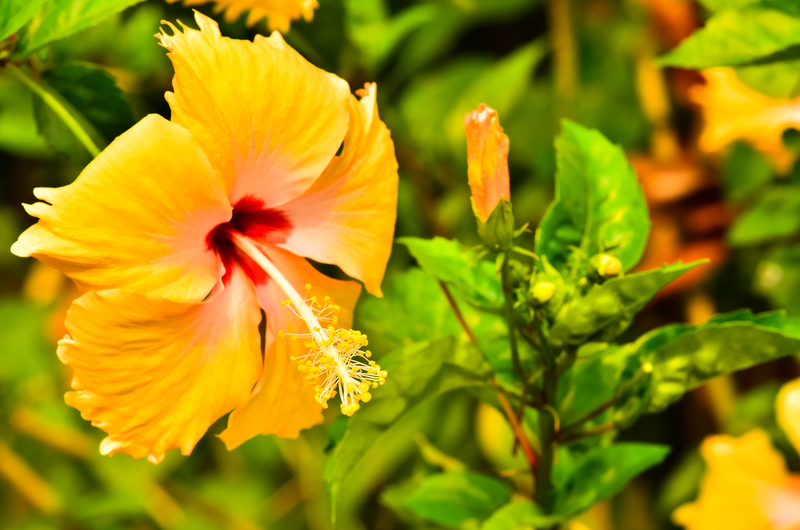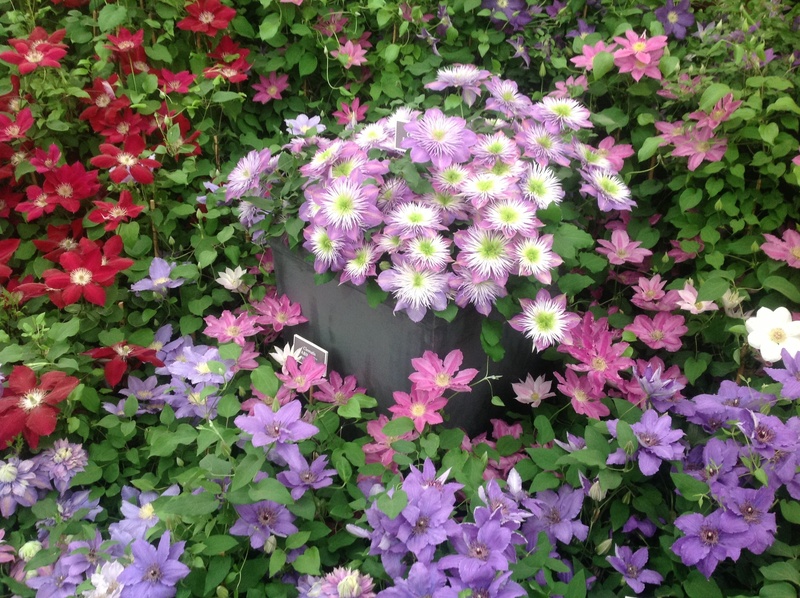From Seed to Sprout: Building Your Herb Sanctuary
Posted on 27/06/2025
From Seed to Sprout: Building Your Herb Sanctuary
Herbs have enchanted gardeners and chefs for centuries, infusing flavor, fragrance, and health benefits into our lives. Have you ever dreamed of a personal sanctuary where lush, aromatic herbs thrive just steps from your kitchen? Whether you are a seasoned gardener or a curious beginner, creating your own herb sanctuary--from sowing seeds to nurturing vigorous sprouting plants--is a rewarding journey. This comprehensive guide will walk you through every essential step to establish a thriving herb garden at home.

Why Grow Your Own Herb Garden?
Building a herb sanctuary comes with a multitude of benefits that extend beyond the mere aesthetics of lush greenery:
- Freshness on Demand: Nothing beats the flavor and aroma of freshly picked herbs.
- Cost Savings: Growing your own herbs is more economical than store-bought options.
- Health Benefits: Herbs contain vitamins, antioxidants, and healing properties.
- Sustainability: A home herb garden reduces packaging and carbon footprint.
- Therapeutic Effects: Tending plants is relaxing, making your sanctuary a source of tranquility.
Planning Your Ideal Herb Sanctuary
Every lush sanctuary begins with thoughtful planning. Before planting your first seed, consider these essential factors:
Choosing the Right Location
- Sunlight: Most herbs require six to eight hours of direct sunlight daily. Assess your outdoor spaces or indoor windowsills for their exposure.
- Accessibility: Place your sanctuary near the kitchen for convenient harvesting.
- Protection: Select a site shielded from harsh winds and heavy foot traffic.
Selecting Containers or Beds
Your herb sanctuary can flourish in a variety of setups:
- Garden Beds: Dedicated in-ground or raised beds for large collections.
- Containers: Pots, window boxes, or vertical planters work well in small spaces or apartments.
- Indoor Gardens: Shelves or racks near sunny windows are excellent for year-round growing.
Soil Preparation
Quality soil is the backbone of any successful herb garden sanctuary. Most herbs prefer well-drained, loamy soil enriched with organic matter.
- Add compost or aged manure for nutrients.
- Check pH levels: herbs thrive in slightly acidic to neutral soil (pH 6.0 to 7.0).
- Ensure pots have drainage holes to prevent root rot.
Choosing the Best Herbs for Your Sanctuary
Selecting the right herbs is vital for your herb garden success. Consider your cooking habits, local climate, and available space.
Perennial vs. Annual Herbs
- Perennial Herbs: These return year after year, ideal for low-maintenance gardens. Examples: rosemary, sage, thyme, chives, mint.
- Annual Herbs: Complete their life cycle in one season. Popular options include basil, cilantro, dill, and parsley (biennial, often grown as annual).
Popular Herb Varieties
- Basil: Perfect for Italian and Thai dishes, needs warmth and full sun.
- Mint: Vigorous and refreshing, best contained to prevent spreading.
- Rosemary: Woody and fragrant; thrives in dry, sunny spots.
- Parsley: Versatile garnish, prefers moist, fertile soil.
- Cilantro: Key for salsas and curries, bolts quickly in hot weather.
- Oregano: Essential for Mediterranean cuisines, prefers full sun.
- Chives: Mild onion flavor and attractive edible flowers.
- Dill: Great for pickling and seafood, grows best in cooler seasons.
From Seed to Sprout: Starting Your Herbs the Right Way
The journey from seed to sprout unleashes the full power of the gardening experience. Here's how to foster strong and healthy seedlings for your herb sanctuary:
Deciding Between Seeds and Seedlings
- Seeds: Cost-effective and offer a wider variety, but require patience and attention.
- Seedlings: Quicker results and easier for beginners, but more limited in choice and slightly costly.
Starting Herbs from Seeds: Step-by-Step Guide
- Gather Supplies: Seed-starting trays, high-quality seed starting mix, herb seeds, water spray bottle.
- Fill Containers: Moisten the seed-starting mix and fill trays or small pots.
- Sow Seeds: Plant seeds according to the packet's depth instructions. Some herbs, like basil and dill, require light for germination--press gently on the surface rather than covering them fully.
- Water Carefully: Mist with water to moisten but avoid over-saturation.
- Provide Warmth & Light: Place trays in a warm spot (65-75?F). Once seedlings emerge, ensure they receive at least 6 hours of light or use grow lights.
- Thin Seedlings: Once true leaves appear, thin out weaker seedlings to avoid overcrowding.
Pro Tip: Label your trays to avoid confusion as sprouts appear!
Transplanting Seedlings Into Your Herb Sanctuary
- Harden Off: Gradually introduce seedlings to outdoor conditions for 7-10 days.
- Transplant Carefully: Move to garden beds or containers, spacing appropriately.
- Water In: Water well after planting to settle roots.
Tending Your Herb Sanctuary: Nurturing Healthy Growth
With seeds sprouted and herbs in place, ongoing care makes all the difference in creating a strong, flourishing sanctuary.
Watering Techniques
- Consistency is Key: Over-watering is the most common mistake. Most herbs prefer soil kept lightly moist, not soggy.
- Morning Watering: Water in the early hours to reduce evaporation and prevent disease.
Feeding and Fertilizing
- Moderation: Too much fertilizer can diminish essential oils and taste.
- Organic Choices: Compost tea or slow-release organic fertilizers support steady growth.
Pruning and Harvesting
- Pinch Young Herbs: Pinch back early growth to promote bushy, vigorous plants.
- Regular Harvest: Snip frequently using clean scissors. This encourages more growth.
- Avoid Flowering: For most culinary herbs, remove flower buds quickly to maintain flavor and leaf production.
Dealing With Common Herb Challenges
Even in the most lovingly tended herb sanctuary, occasional problems can arise. Here are the most common issues--and how to solve them:
Pests and Natural Solutions
- Aphids: Wash off with a gentle spray or use insecticidal soap.
- Slugs: Protect with crushed eggshells or copper tape around containers.
- Spider Mites: Increase humidity and spray undersides of leaves with water.
Disease Prevention
- Good Air Circulation: Space plants to discourage mildew and rot.
- Sanitation: Remove dead leaves promptly and clean containers each season.
- Rotate Crops: Change the location of annual herbs each year to prevent soil-borne diseases.
The Joy of Seasonality: Year-Round Herb Sanctuary
With a few adjustments, you can enjoy fresh homegrown herbs twelve months a year. Here's how to extend your sanctuary's productivity:
Herbs for Each Season
- Spring: Parsley, dill, cilantro, chives.
- Summer: Basil, oregano, rosemary, thyme.
- Fall: Sage, tarragon, chervil.
- Winter (indoors): Mint, chives, thyme, parsley (with enough warmth and light).
Winterization Tips
- Mulch Outdoor Beds: Protect perennial roots with straw or leaf mulch.
- Move Containers Indoors: Place pots in sunny windows or under grow lights.
- Reduce Watering: Growth slows in low light and cooler temperatures.
Creative Touches for a Unique Herb Sanctuary
Your herb garden should reflect your personality and spark joy every time you enter. Consider these creative ideas to elevate your space:
- Themed Gardens: Design around specific cuisines--such as Italian (basil, oregano, parsley) or French (tarragon, chervil, thyme).
- Incorporate Decorative Elements: Use painted pots, trellises, or herb labels.
- Add Seating: Create a relaxing nook to unwind amid the aromas of your sanctuary.
- Mix in Flowers: Edible blooms (like nasturtium or calendula) attract pollinators and enhance beauty.
- Water Features or Stones: Bring tranquility and a sense of escape to your personal herb paradise.

Harvesting and Preserving Your Herbs
When your sanctuary flourishes, you'll often find yourself with an abundance of fresh herbs. Here's how to maximize your harvest:
Best Time to Harvest
- Morning Harvest: Essential oils peak after dew dries but before midday sun.
- Up to Two-Thirds: Never remove more than two-thirds of the plant at one time.
Preserving Your Bounty
- Freeze: Chop and store in ice cube trays with water or olive oil.
- Dry: Hang bundles in a well-ventilated area out of direct sunlight.
- Herb Vinegars & Butters: Infuse oils or make herbed butters to capture summer flavors for months.
With just a little planning, you can savor your herb sanctuary's gifts all year long!
Conclusion: Cultivating Your Dream Herb Sanctuary
Creating a thriving herb sanctuary from seed to sprout is more than a gardening project; it's a lifestyle upgrade. Imagine stepping into your own peaceful retreat, surrounded by the vibrant sights, scents, and flavors of homegrown herbs. Every step--from selecting varieties to harvesting your bounty--deepens your relationship with nature and nourishes your culinary creativity.
Whether you are crafting a miniature windowsill garden or an outdoor haven, the principles of light, soil, water, and care remain the same. Start small, savor the process, and let your sanctuary grow with you. Along your journey, you'll discover new favorites, unlock rich flavors, and find endless inspiration right outside your door.
Ready to embark on your seed-to-sprout adventure? Begin building your own herb sanctuary today and reap the aromatic rewards for years to come!
```
